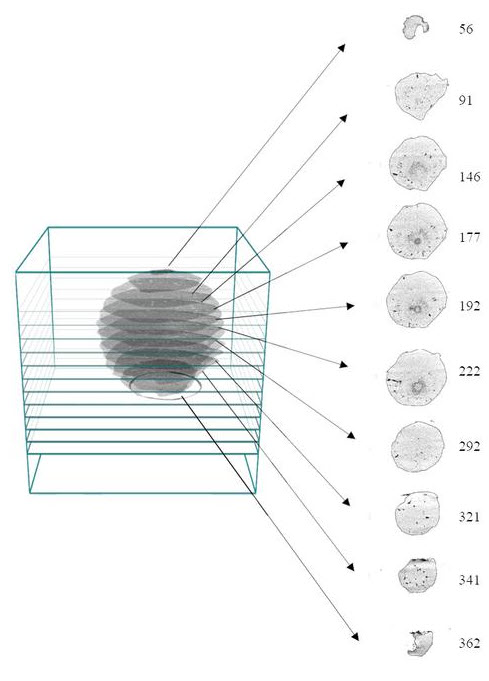Posted on December 8, 2024

Researchers in Catalonia have used computed tomography (CT) scans to examine giant hailstones that fell during an exceptionally strong thunderstorm in the summer of 2022. This method enabled the researchers to examine the large hailstones without breaking them.
The study revealed that even hailstones that appear spherical can have irregular internal axes and planes. The scans also provide data on the density levels and layering of hailstones as they form and grow during a severe thunderstorm. Researchers were able to observe 512 images (CT slices) showing the location of the core and different layers.
Lead author Carme Farnell Barqué said in a statement, “It is the first time that we have a direct observation of the entire internal structure of hailstones, which can provide clues to improve hail formation forecasting.”
Barqué also says, “Until now, it was believed that very large hailstones could only have irregular shapes. However, we observed that the external and internal shapes can differ. In one case, we have demonstrated that the sample exhibited heterogeneous growth but had a regular external shape. Conversely, stones with irregular external shapes showed homogeneous growth.:
Co-author Dr. Tomeu Rigo Ribas says, “We show that the embryo can be located far from the center. This fact implies that the stones can grow heterogeneously in three directions.”
A research paper on the hailstone CT scans was published in the journal, Frontiers in Environmental Science.
Image: Farnell Barqué et al., 2024.








Leave a Comment